 Model
Model
Facial Fat Transfer in Houston, TX
When it comes to aesthetics, fat is a double-edged sword. Too much fat means bulges and rolls, but too little creates hollows and emptiness. This is especially true when it comes to your facial appearance. A youthful face is dependent on fat, but as aging progresses, these fat deposits shift and atrophy, creating many of the telltale signs of aging.
If you want to replenish the volume loss in your face, but dislike the doughy and puffy appearance of traditional injectable fillers, facial fat transfer may be the solution. Facial fat transfer is one of the fastest-growing cosmetic procedures available, as it offers natural-looking results and longevity while helping to reverse or reduce the natural effects of aging on the face.
At Facial Plastic Surgery Associates, award-winning and double board-certified facial plastic surgery expert Dr. Sean Delaney can restore a more youthful and natural appearance using facial fat transfer. By replacing facial volume using your own fat, facial fat transfer provides a more natural rejuvenation result, free from puffiness, and offers re-volumization that lasts longer than fillers.
Table of Contents
- What Is Facial Fat Transfer?
- What Are the Benefits of Facial Fat Transfer?
- Am I a Good Candidate for Facial Fat Transfer Surgery?
- Why Should I Select Dr. Delaney for My Facial Fat Transfer Surgery?
- What Can I Expect From a Facial Fat Transfer Consultation at FPSA?
- Can Facial Fat Transfer Be Combined With Other Procedures?
- What Can I Expect From My Facial Fat Transfer Recovery?
- What Can I Expect From My Facial Fat Transfer Results?
- Frequently Asked Questions About Facial Fat Transfer
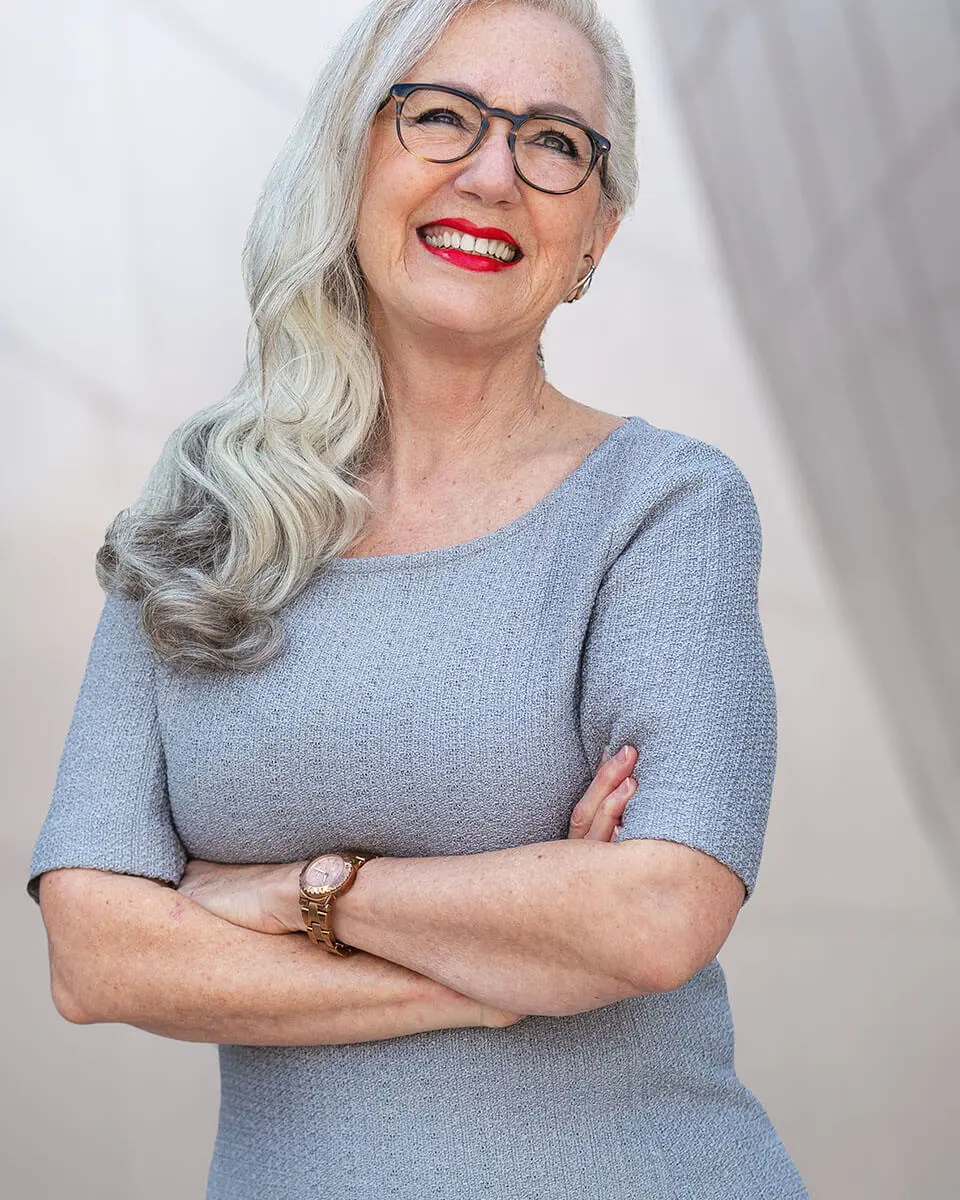
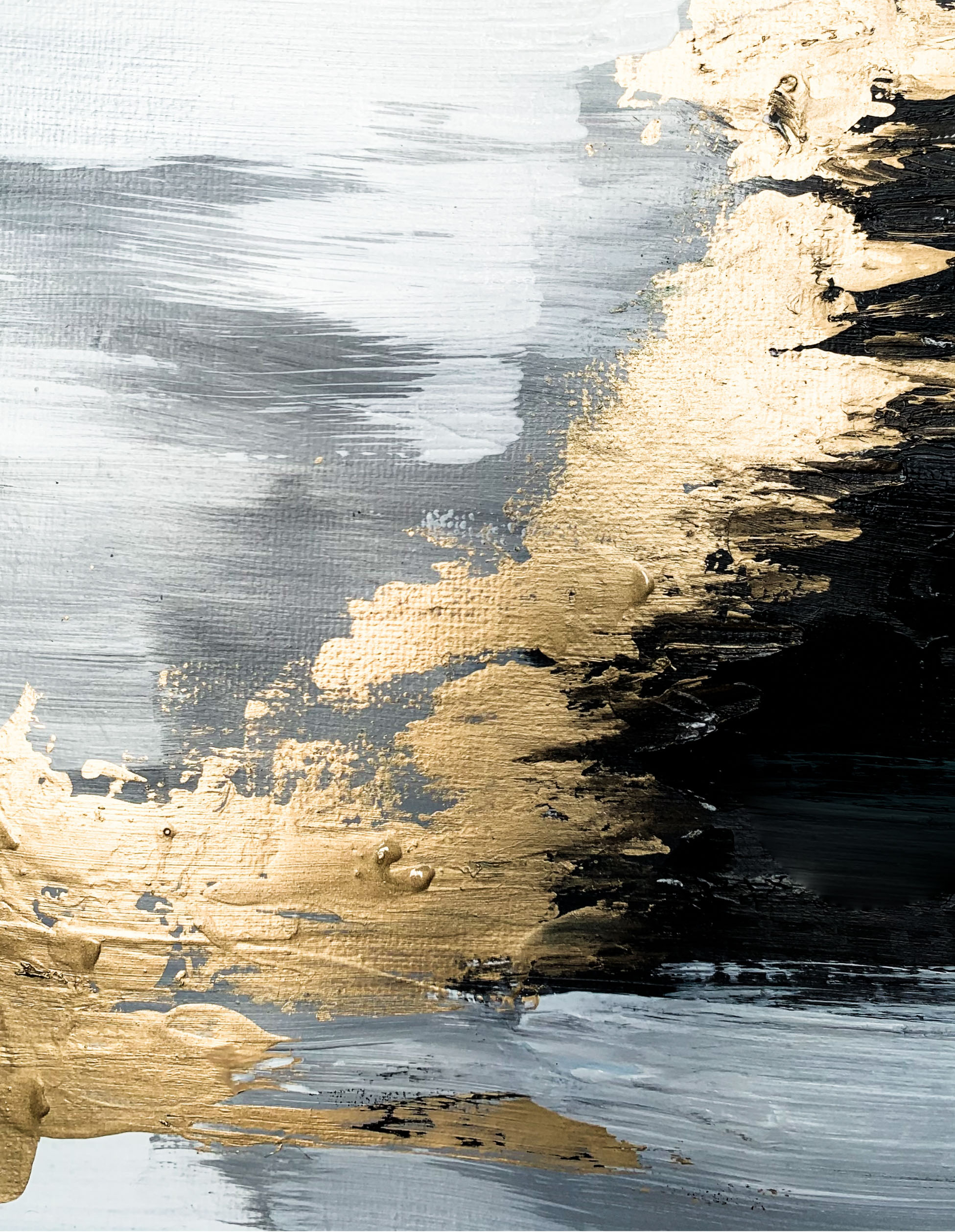 Model
Model
What Is Facial Fat Transfer?
Facial fat transfer, also known as facial fat grafting, is a minimally invasive cosmetic procedure that utilizes fat taken from your own body to restore volume and improve facial hollowing caused by aging, weight loss, or sagging skin.
Dr. Delaney uses purified fat (microfat and/or nanofat) extracted from your own body, usually from the thighs or abdomen. Fat is harvested using a gentle liposuction technique immediately before it is purified and transferred to the areas of the face targeted for treatment. Typically, about 50–70% of the initial volume of grafted fat survives, so a touch-up procedure may be required.
The grafted fat is permanent once the fat “takes,” meaning it is supplied with blood at the recipient site. This process takes about 4 months. Fat transfer to the face typically has a higher survival rate than fat transfer to the body, especially in areas that don’t move as much, such as the cheeks or temples. The aging process continues after the procedure, but patients enjoy a more youthful appearance for many years.
What Are the Benefits of Facial Fat Transfer?
The primary benefits of facial fat transfer are not only the natural and long-lasting aesthetic results, but also the ability to utilize your own fat for the procedure, rather than a manufactured product such as traditional dermal fillers. Other benefits include:
- Long-lasting volume
- Improvement in skin quality
- Can be used to fill hollows under the eyes, plump cheeks, define your jawline, or smooth deep wrinkles and folds
- Can restore youthful volume and balance to your facial features
- Versatile and customizable
Facial fat transfer can add fullness, reduce lines, and improve facial contours. A bonus benefit of facial fat transfer is that, because it utilizes your own fat for the procedure, you get to reap the benefits of body contouring and facial rejuvenation in just one treatment.
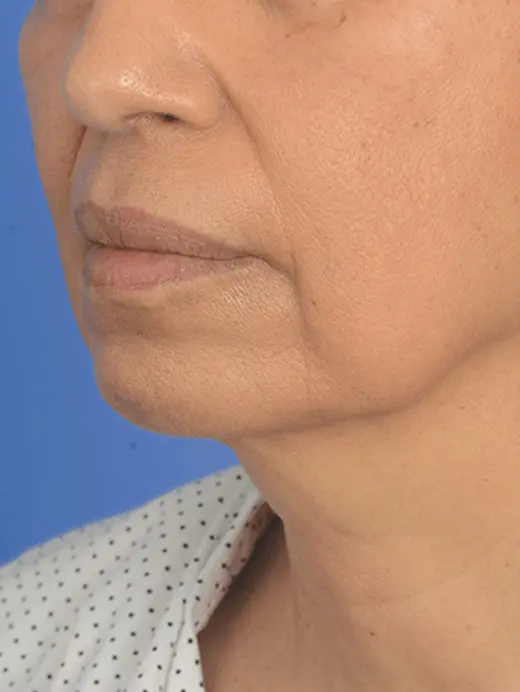

Facial Fat Transfer with Facelift and Chin Implant
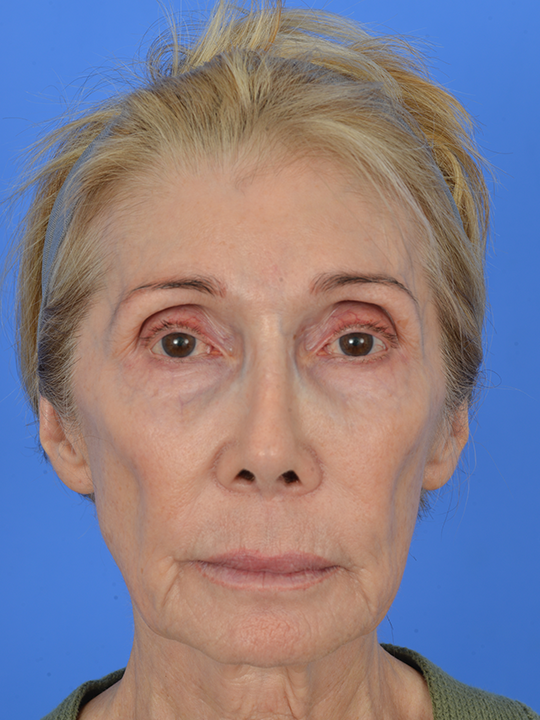
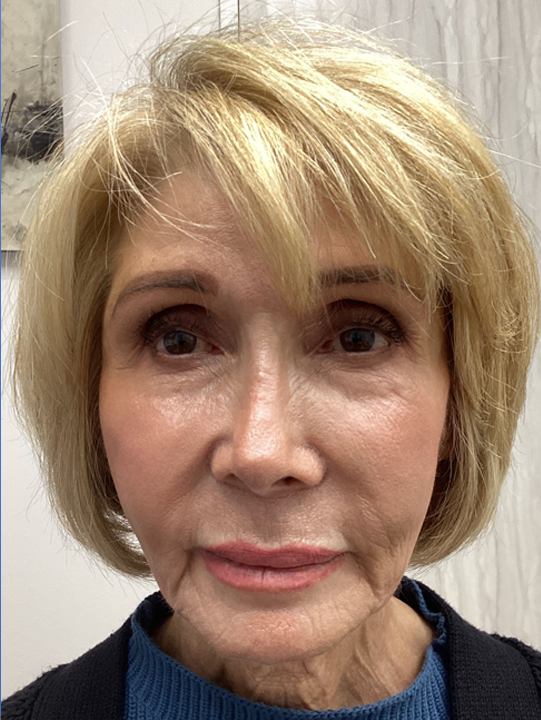
Facial Fat Transfer
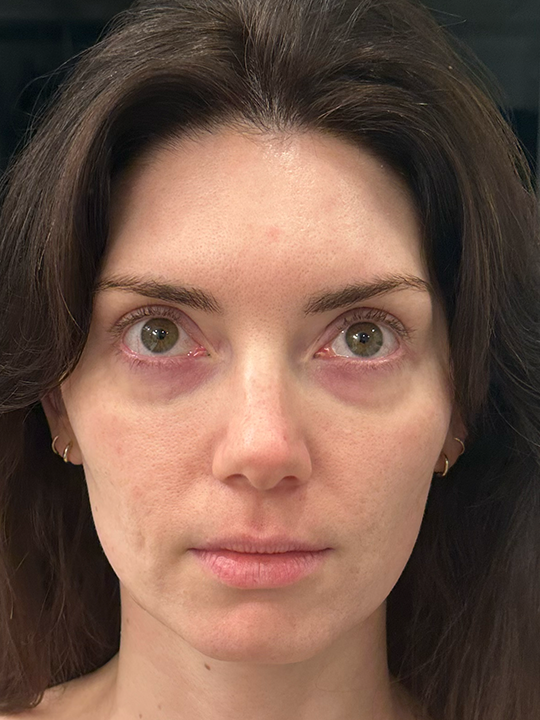
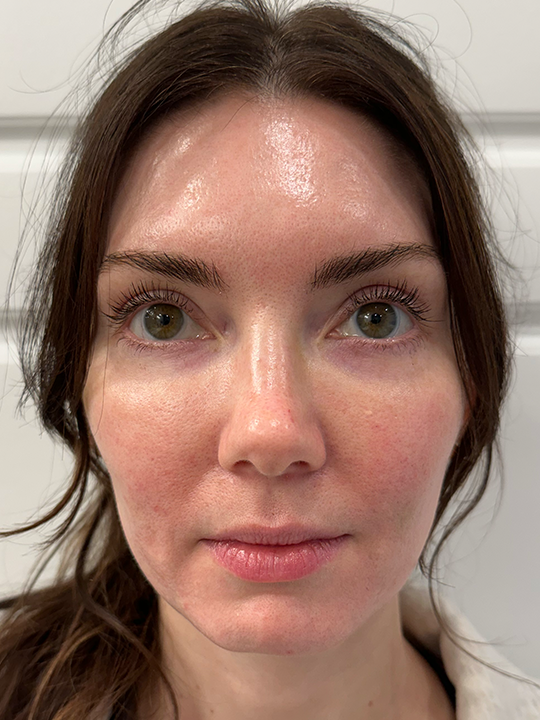
Am I a Good Candidate for Facial Fat Transfer Surgery?
Facial fat transfer benefits individuals who begin to experience facial volume loss (which typically starts in their 30s) or who have lost significant weight. Fat transfer restores volume in the face, making it an ideal option for people seeking more long-term alternatives to dermal filler treatments. Additionally, ideal candidates for fat transfer must have enough excess fat on their bodies to be harvested for use in the procedure.
Why Should I Select Dr. Delaney for My Facial Fat Transfer Surgery?
What sets double board-certified facial plastic surgeon Dr. Sean Delaney apart from other Houston plastic surgeons is the combination of his unparalleled training, advanced surgical techniques, artistic perspective, and devotion to the highest level of patient care throughout your aesthetic journey. With his training in both otolaryngology (head and neck surgery) and facial plastic surgery, he is intimately familiar with the anatomy of the face, which allows him to perform facial fat transfer more effectively and safely.
Dr. Delaney has been named a Texas Rising Star by Super Doctors and a Top Doctor in plastic surgery in Castle Connolly’s Guide to America’s Top Doctors. When you undergo facial fat transfer surgery with Dr. Delaney, you experience peace of mind, knowing that an experienced and well-respected facial plastics specialist is overseeing your care from start to finish.


What Can I Expect From
a Facial Fat Transfer Consultation at FPSA?
Our facial fat transfer consultations are comprehensive, and you can expect to spend an hour or so with us. When you first arrive, a team member from FPSA will take your photograph from multiple angles and review your medical history and patient information forms with you.
During your facial fat transfer consultation, Dr. Delaney will talk with you about your facial volume concerns and goals for treatment, as well as answer any questions you may have. In addition, one of our patient concierges will accompany you every step of the way as your guide throughout your consultation. Your concierge will review before and after photos, educational materials, and provide you with an estimate for your individualized treatment plan, as well as answer any questions you may have prior to booking your surgery.
Can Facial Fat Transfer Be Combined With Other Procedures?
Facial fat transfer can be performed alone or with other complementary facial procedures. Many patients take advantage of the opportunity to have a single recovery period and combine both surgical and non-surgical procedures. Facial fat transfer is commonly combined with surgical facelifts or upper eyelid blepharoplasty, as well as non-surgical procedures such as CO2 laser skin resurfacing, FaceTite, or Morpheus8.

 Model
Model
Before Surgery
What Do I Need to Do Before Facial Fat Transfer Surgery?
It is recommended that you stop using hyaluronic acid-based fillers at least one year before having facial fat transfer surgery or have facial fillers dissolved at least three weeks before surgery.
With any surgical procedure, it is necessary to avoid any medications or supplements that may thin the blood two weeks before and two weeks after your facial fat transfer surgery. Our clinical staff will review instructions regarding medications and supplements during your pre-operative appointment.
We recommend that you avoid alcohol for two weeks before and after your surgery. You should maintain a healthy diet and avoid foods high in salt, fat, and processed sugar. We recommend taking Arnica, bromelain, and vitamin C supplements five days before surgery and one week after surgery to reduce bruising, inflammation, and expedite healing. It is also essential to avoid significant sun exposure. Dr. Delaney does not operate on patients who smoke, chew tobacco, vape, or take illicit drugs prior to or at the time of surgery, as these activities have a detrimental effect on the healing process.
When Is My Pre-Operative Appointment?
Your pre-op appointment will take place two to three weeks prior to your surgery. We strive to make this appointment as stress-free as possible. At this appointment, you will receive pre-operative and post-operative instructions, review and sign the consent forms, take pre-operative photos, and make the final payment. You will also receive the list of your prescriptions. Most of our patients find that using our Capsule Pharmacy service in advance of the pre-op is quite convenient because all prescriptions will be delivered to our office and ready for you at the pre-op appointment.
At this appointment, patients also like to select skincare products appropriate for pre-operative and post-operative skin health and optimal healing.
Day Of Surgery
How Is Facial Fat Transfer Performed?
Dr. Sean Delaney and the entire FPSA team provide our patients with an exceptional surgical experience in our beautiful practice environment. You will enjoy the comfort, ease, and convenience of undergoing facial fat transfer surgery at our fully accredited AAAHC surgical center, where the procedure is performed using IV sedation or local anesthesia.
Dr. Delaney uses purified fat that is harvested from your own body using a gentle liposuction technique. After the fat is harvested, it is then processed through a centrifuge, purified, and then reinjected back into the desired areas of the face.
Dr. Delaney is conservative with fat transfer to ensure natural results and to avoid an “over-injected” look. His meticulous technique of harvesting and processing the fat, as well as his injection techniques, helps avoid lumpiness and ensures that as much transplanted fat as possible survives.
Facial fat transfer surgery typically takes around 1.5 to 2 hours to complete, depending on the number of areas selected for the transfer. We ask that you arrive at our facility approximately 1.5 hours before your surgical start time. You should have nothing to eat or drink (not even water, candy, or gum) after midnight the night before your procedure. You should wear a button-up top or loose-fitting clothing to allow you to change easily without placing unnecessary pressure or stress on the facial area and the donor site. You will need an adult driver on the day of your surgery to bring you to the surgery center and to take you home, as well as care for you the first 24 hours after surgery.

 Model
Model
What Can I Expect From My Facial Fat Transfer Recovery?
Recovery time from facial fat transfer surgery varies from patient to patient, but it typically takes four to six weeks for a full recovery. The initial phase of healing, during which swelling is most noticeable, typically lasts one to two weeks. During this time, you can expect bruising and swelling, and it is recommended that you avoid massaging the injection sites.
Following a facial fat transfer, you will be seen the very next day in our office for your first post-operative visit. You should sleep on your back with your head slightly elevated for the first week after surgery.
Our patients often comment that the overall discomfort is far less than they expected. Most patients experience minimal pain immediately after surgery, but may feel some soreness over the first few days. We have found that most patients can manage discomfort levels with over-the-counter pain relievers; however, we also prescribe stronger medications for those who require additional pain management.
The swelling that occurs in the initial week following your facial fat transfer surgery is due to inflammation caused by the procedure itself, swelling from the injected local anesthetics, and inflammation caused by the transferred fat. Mesenchymal stem cells introduced during the fat transfer can sometimes stimulate a second boost in facial volume about two to three months after the procedure. Due to the potential for a secondary boost and the fact that fat graft survival rates can sometimes exceed 70%, we do not routinely overfill our patients, as this may result in an “over-filled” and unnatural appearance. The final fat transfer result takes about four months. At this time, additional fat grafting may be performed, if desired.
Dr. Delaney will monitor the healing during your post-operative visits. Fat donor site sutures used during surgery will be removed in a week.
You can usually resume most daily activities one week after surgery, but you should avoid strenuous exercise or vigorous exertion for the first three weeks. You should also avoid smoking or chewing tobacco, and you shouldn’t take aspirin or anti-inflammatory compounds.
What Can I Expect From My Facial Fat Transfer Results?
After your facial fat transfer procedure, you will see an immediate improvement, as your face will look smoother, fuller, and more youthful. While some initial swelling and bruising after the procedure are normal, these side effects will fade over the following days and weeks as the transplanted fat settles into place.
As the grafted fat establishes a new blood supply, the increased volume in your face will refine, becoming softer and more natural in appearance. You may also notice enhanced skin quality thanks to the regenerative stem cells in the fat, resulting in a healthier, more radiant complexion that continues to improve over time. And, because the injected fat integrates with your existing tissue, your results can last for years, as long as you maintain a stable weight.
Again, keep in mind that approximately 50–70% of the transferred fat survives. Because of this, it may take more than one facial fat transfer procedure to achieve your desired result.
Frequently Asked Questions About Facial Fat Transfer
While fat grafting can be utilized in various locations around the body to increase volume, several areas of the face are more frequently addressed than others. At Facial Plastic Surgery Associates, we specialize in procedures from the neck and up and are experts in facial anatomy.
Typically, the most common areas on the face where fat grafting is utilized are the midface, cheeks, under the eyes, temples, smile lines, marionette lines, jawline, and lips.
Volume loss is a common concern associated with facial aging, but it can be effectively treated with facial fat transfer or dermal fillers. Facial fat transfer is a surgical procedure that utilizes a patient’s own fat to restore facial volume, offering a longer-lasting result than fillers. A typical dermal filler treatment is a non-surgical treatment that may last up to 12 months. Facial fat transfer has the potential to offer long-term improvements of 5 to 10 years in most patients.
Another more permanent option for restoring volume loss is facial implant surgery, which provides a permanent, three-dimensional volume augmentation in specific regions, such as the chin, cheek, or temple.
Facial fat transfer and dermal fillers are both cosmetic procedures that improve facial volume and symmetry. Typical dermal filler treatments last approximately 6 to 12 months. However, facial fat transfer may offer improvement for several years.
While facial fat transfer is a more involved process, the procedure is naturally more expensive than dermal fillers. However, fat transfer can be economical in most instances if you consider the volume of fat that can be injected in a single setting and the longevity of the volumization compared to repeated injections of a large volume of traditional fillers over time. Dermal fillers can be an excellent option for special events or low-volume touch-ups because the results are more immediate, it is convenient to administer, and does not require downtime for recovery.
Microfat and nanofat are both fat-based treatments used in facial fat grafting to enhance the appearance of your skin. However, the primary difference between them is the size of the fat particles. Microfat is actual fat, whereas nanofat is the stem cell portion of the fat cell. Nanofat is used for areas requiring more skin rejuvenation, such as the thin skin of the lower eyelids or acne scarring, rather than areas requiring more volume.
Common side effects of facial fat transfer include bruising and swelling, as well as a feeling of numbness or altered sensation in the areas where fat has been transferred. This is usually temporary. Bleeding and infection are uncommon. The fat donor sites may feel slightly irregular or lumpy in the week after the procedure, but this typically resolves on its own as the remaining fat smoothens out and redistributes evenly.
Begin Your Journey With Facial Plastic Surgery Associates
Discover firsthand how effortless your journey will be to enhance your natural beauty and achieve your aesthetic goal. At Facial Plastic Surgery Associates, you can feel confident that you will be in the best, most caring hands every step of the way. Schedule a comprehensive consultation by calling (713) 526-5665 or completing our online contact form.
Schedule a Consultation

Let's Get Social
Connect with Us on Our Social Channels
Stay connected with us on social media and witness the impact Facial Plastic Surgery Associates has on the lives of our patients.




